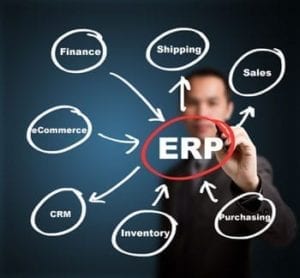Rapid changes in business processes and supporting technology have seen many businesses question the investment in an Enterprise Resource Planning (ERP) system.
ERP software however still holds massive value as both business engine and monitoring dashboard – if implemented and managed correctly. “The success of an ERP project should provide real improvement where the client experiences returns that far outweigh the investment in the ERP project,” says Hein Pretorius, CEO of Onpro Consulting. “As well as improved competitiveness, diminished limitations within the business, and all stakeholders embracing the way forward, should be considered as top measures for success. “The formal modelling of business requirements, business processes, business rules and data should be a pivotal cornerstone of any project approach,” advises Pretorius. “Specialised modelling software, rather than a combination of word processing, slide presentation, or diagram drawing tools is a key component of this formalisation.” According to Pretorius, the emphasis of an ERP project must always be on system requirements and processes that serve the larger business requirements. This will ensure that the business purpose of the project remains top of mind throughout the project. Such a strategically aligned modelling approach provides a number of benefits to the business. CollaborationA successful system implementation rests on the creation of a model that provides the platform for a collaborative approach to business requirements, business processes and business rules discovery. This platform should serve as a mechanism for reaching a common understanding and agreement of how things really work, not how only one party think things work. This approach guarantees a system that becomes the ultimate reference guide to the solution and system, and how it works.
Simplicity
Identifying and agreeing on a single source of solution design is one of the most difficult and important steps in designing a business model during an ERP implementation. Pretorius advises strongly to dedicate enough time to this step, as everything else will filter down from the decision.
When documentation is generated from the modelling software, version control is absolute, and accuracy and completeness are ensured. To gain this amount of control, it is necessary to generate test plans and test cases from the modelling software before a system reaches the “go-live” stage. “This ensures that the tests reflect the way the solution was designed, no debating, no guesswork,” says Pretorius. “It helps to prove a defect really is a defect, and not subject to interpretation.” Savings
Pretorius believes that money, time, and effort should not be expended on designing and debating processes that do not contribute to any enhancement of the organisation’s competitive positioning. Not all processes within a company are competitive advantage processes. Some processes could be exactly the same as a competitor with zero detrimental impact on the organisation’s ability to compete. “Using modelling tools, it is possible to make use of template industry standard processes that are then modified or updated for the specific application,” advises Pretorius.








